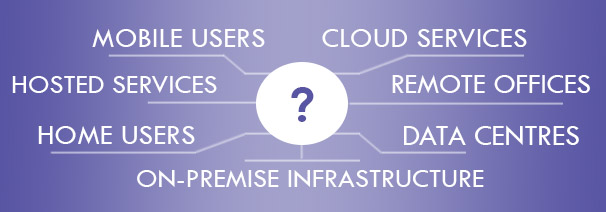Key Elements and Considerations of Next Generation Communications

The benefits of Unified Communications across an organisation has been well documented over the past 5 years, though completely seamless communication across messaging, voice, video and content has not really played out as effectively as promised.
Enterprise Collaboration tools have helped to streamline internal communications somewhat, and video conferencing at the desktop and the meeting room is becoming far more commonplace as organisations recognise the needs to serve employees and customers more effectively. However the growing requirement for more flexible, scalable and secure interactions is putting major strain on networks, and multiple silos of collaborative tools added over time is recognised as one of the biggest inhibitors to digital transformation today.
One thing is for sure; for businesses to stay competitive, to stay connected and to grow, digital transformation is required and the choices you make now will have profound effect on the future of your business.
So what are the key considerations in digital transformation to ensure secure, efficient and seamless communications across today’s collaborative organisations?
Considerations and Complications
Whether your organisation is considering on-premise infrastructure, cloud-based subscriptions, hosted services or some hybrid of the three, it is imperative to ensure decisions are well founded, well researched, properly advised, and unbiased.
Trial and error may have been the name of the game for some Skype for Business, WebEx and VoIP-in-the-cloud deployments over the past 5 years, but business communications are no longer areas that can be guessed at. It is critical that email, telephony, wireless and management services work first time and are reliable, scalable, secure and simple to use for everyone. Redundancy and failover must be planned, and end-to-end communication cannot be compromised.
Choosing a collaborative solution may seem simple on the face of it, especially with the power behind marketing and advertising from many of today’s large organisations, but in practice, you’re often only hearing one side of the story. Some offerings may work in principle with the current platform you have installed internally on a single site, or may seem fantastic during a flashy demonstration, but will it work to achieve your organisations aims? Will it work with interlinked sites, homeworkers, guests, customers and suppliers who are often not on the same network or use the same platforms as you? These are key areas to consider when moving forwards with your digital transformation.
Similarly, linking networks together via the Internet is just one part of the solution. What about sites you wish to keep private on your WAN? How about tablets and Smartphone users, and remote workers who are using their handheld device over a fixed desktop PC?

Yes, it would be wonderful for all of this to happen as seamlessly as advertised, but realistically it doesn’t. Islands are being created, and confused complex integrations of a mixed bag of solutions provided by many different providers are creating challenges and pains that are counteracting the promised opportunities of efficient enterprise communications.
The key to making this all work seamlessly relies on efficient bridging, properly integrated management tools and interoperability gateways, often internet based and increasingly cloud based. However organisations must be careful not to get locked into the wrong choice and driven down a route unsuitable for their business, but similarly not be scared off by the complexity, hold back and wait, whilst losing out on the advantages that competitors are already capitalising on.
It might sound cliche, but you must stop and think. Seek independent advice, set your goals so you can measure results, analyse and review progress regularly to feedback into the next phase of your transformation, and understand all of the interlinking elements before you continue.
Yes, it would be wonderful for all of this to happen as seamlessly as advertised, but realistically it doesn’t. Islands are being created, and confused complex integrations of a mixed bag of solutions provided by many different providers are creating challenges and pains that are counteracting the promised opportunities of efficient enterprise communications.
And finally, be sure you’re not being led down a route that sounds too good to be true, and is actually better for someone elses pocket rather than yours.
So what are the important elements to consider for efficient next-generation communications in the enterprise? And what essential services are required to underpin them? Download our new e-book to read more about the 4 key elements to Next-Generation communications in the enterprise and what you can do to move forward with reliable, secure, simple and scalable communications.
